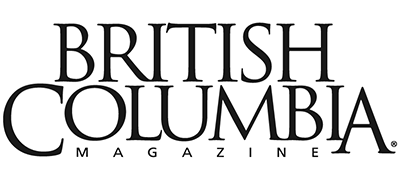British Columbia experienced several gold rushes throughout the latter half of the 1800s – some large, some small. With the influx of miners and their families, as well as entrepreneurs looking to capitalize on the miners’ new prosperity, new towns sprung up across the province. Some of these towns boomed, while others only lasted as long as the prospectors remained in the area.
Fraser Canyon Gold Rush
Victoria

The Fraser Canyon Gold Rush was the first major gold rush B.C. experienced. It began in 1857, just as the gold rush in California was winding down. Miners and their families traveled from far and wide to try their hand at panning for gold in the north. Those heading to the colony of British Columbia were legally obligated to enter through Victoria. This restriction was an immigration control put in place by governor James Douglas. At the time, Victoria was a small town of about 500. Within a month, about 30,000 people had flooded in.
Today, Victoria is the capital of B.C. and home to over 78,000 people.
Yale

With miners staking their claims along the Fraser Canyon region, the town of Yale boomed. During its heyday, Yale was named the largest town north of San Francisco and west of Chicago, with a peak population of about 16,000. It was also known for its lawlessness and violence.
Originally known as Fort Yale, the town was the epicenter for the Fraser Canyon War and McGowan’s War during the gold rush era, which threatened the British monarchy’s hold on the new colony from Americans.
Situated along the Fraser River, immediately south of the Fraser Canyon, meant Yale was the ideal location to begin the Cariboo Wagon Road – this road ran from Yale to Barkerville. Because of Yale’s unique position and role as a point of transportation, the town prospered for another 20 years after the gold rush ended.
Port Douglas
Port Douglas is situated on the east mouth of the Lillooet River and was the second major settlement on mainland BC, after Yale, during the Fraser Canyon Gold Rush.
Stretching from Port Douglas to Lillooet is the Douglas Road, a mixed route between land and water. During the peak of the gold rush, thousands of people set up shop in Port Douglas and many mainland companies started here.
After the gold rush ended, the population of Port Douglas dwindled quickly and today there is nothing left.
Lillooet

Lillooet has an extensive history when it comes to gold mining. The town was one of the main centres of the Fraser Canyon Gold Rush.
After the gold rush ended, Royal Engineers came in to survey the town and changed the layout to what you see today. Main Street was tied into the original Cariboo Wagon Road, until construction began on the modern-day Cariboo Wagon Road that leads from Yale to Barkerville via Ashcroft. Residents of Lillooet, however, still consider their town Mile 0 of the original wagon road and there is a monument in town to commemorate this.
Gold mining still continues in the Lillooet area today, as well as prospecting for copper, silver and jade. The Golden Cache Mine, located on Cayoosh Creek west of Lillooet, is thought to hold one of the richest veins of gold, but a lack of results ended any investment in the mine.
Ghost towns of the Fraser Canyon Gold Rush

Other towns were established during the Fraser Canyon Gold Rush, but they are now vacant and considered ghost towns. These include Fort Berens, Bralorne (a town that later struck it rich from 1932 to 1971, mining three million ounces of gold), Barkley Valley, Derby, Hill’s Bar and Parsonville.
Cariboo Gold Rush
Barkerville

Barkerville was the epicenter of the Cariboo Gold Rush, which began in 1861 as a spin-off from the Fraser Canyon Gold Rush. Gold was first discovered in 1859 on the Horsefly River, along with other strikes made on Keithley Creek and Antler Creek in 1860. These strikes were made known in 1861, and further strikes along Williams Creek in 1865 pushed the Cariboo Gold Rush into full swing.
Barkerville was named for Billy Barker, of England, whose claim during the gold rush proved to be the richest, and eventually the most famous. His claim would yield 37,500 ounces of gold.
The town’s population seemed to grow overnight, thanks to word of Billy’s discovery. Before the completion of the Cariboo Wagon Road, would-be miners had to haul their supplies in – either on their backs or by pack train. This meant any supplies that could be purchased in town came with a high price tag.
At the peak of the gold rush, in the 1860s, Barkerville had about 5,000 residents. At first, the town was made up of makeshift cabins and tents, but it soon grew to be a tried-and-true community with a school, general stores and other businesses.
In 1997, the BC government set about restoring the town to its former glory and Barkerville became a tourist attraction. Now referred to as Barkerville Historic Town, tourists can see what life was like during the heydays of the gold rush.
Richfield

Richfield was established in 1862 and named for the gold claim found near Williams Creek, by miner Bill Cunningham.
As word of the gold discovery spread, people can from far and wide to try their hand at panning for gold in Richfield. Soon the town grew to include several saloons, a jail, a courthouse and a church, as well as a bank, a hotel, a post office and other stores.
Unfortunately, there wasn’t much more gold to be found in Richfield and soon miners packed up and moved onto other destinations. Today, Richfield is a ghost town.
Quesnel

Once known as Quesnellemouth, to distinguish the town from Quesnel Forks, another 60 miles up the Fraser River, what is now known as Quesnel was the commercial centre for the Cariboo Gold Rush. The town was situated along the Cariboo Wagon Road.
Today, the city of Quesnel is home to over 10,000 residents.
Quesnel Forks

Established in 1860, Quesnel Forks was the supply centre for the Cariboo Gold Rush. Over 2,000 miners a year passed through the town between 1860 and 1862, with about 100 permanent residents. When the Cariboo Wagon Road was completed, miners could bypass Quesnel Forks and Barkerville became the new centre for gold mining activity.
The population had dwindled by the 1870s, but a core group of Chinese miners and businessmen remained and set up a community. The town wasn’t completely abandoned until the 1950s.
Today, tourists can explore Quesnel Forks and see restored pioneer buildings, as well as the historic cemetery.
Alexandria

Set on the shores of the Fraser River, Alexandria was once a fort for the Hudson’s Bay Company. With the discovery of gold and the Cariboo Gold Rush in full swing, Alexandria grew to a large tent community for miners. Eventually, road-builder Gustavus Blin Wright launched his sternwheeler from Alexandria, which would take passengers and supplies up the Fraser River to Quesnel. From the town of Quesnel, travelers could then take the road on to Barkerville.
Horsefly
Previously known as Harper’s Camp, the town of Horsefly is home to the first major gold discovery of the Cariboo Gold Rush, along the Horsefly River. As miners invaded the area, searching for their own riches, Horsefly grew to include hotels, a store and a post office.
Today, Horsefly is a tourist destination and includes many modern amenities, such as stores, a museum and restaurants.
Stanley
The town of Stanley was established when gold was found in nearby Lightning Creek, during the Cariboo Gold Rush. If you take Highway 26 east of Quesnel, after about 45 minutes you’ll pass by Stanley Road – the community was once located along this road.
In the late 1800s, Stanley’s population surpassed Barkerville. But, as the gold dwindled, so did the town’s population. Today, there is nothing left except an old building that used to be the Lightning Hotel.
Ghost towns of the Cariboo Gold Rush
Other small towns that sprang up during the Cariboo Gold Rush, and were then abandoned when the gold was all mined, included Bullion, Keithley Creek and Antler Creek.
Gold In BC
In addition to the major gold rushes – Fraser Canyon and Cariboo – BC experienced several other, smaller gold rushes and towns sprung up as a result of the influx of miners to these areas. These towns are now abandoned.
Fisherville was established during the Wild Horse Creek Gold Rush. At its peak, the town was home to about 5,000 residents and several businesses.

Big Bend and Mica were established during the Big Bend Gold Rush.
The town of Blackfoot was set up during the Similkameen Gold Rush, as well as the town of Hedley.
Cassiar, McDame and Dease Lake were established during the Cassiar Gold Rush.
The Omineca Gold Rush saw the establishment of Dunkeld, Germansen’s Landing, Hogem, Howellton, New Hogem and Omineca City.
Granite Creek was erected during the Tulameen Gold Rush. At its peak in 1886, the town was home to about 2,000 residents.




